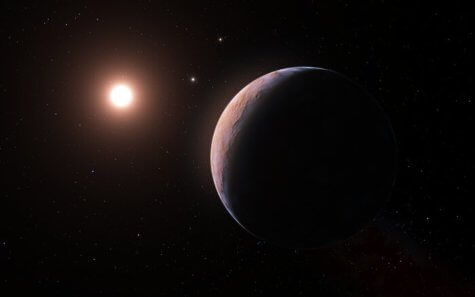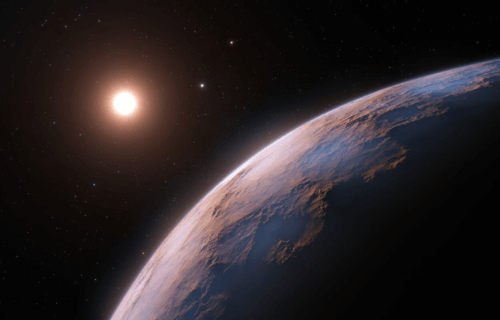
PORTO, Portugal — A brand new planet in the solar system closest to our own is giving astronomers new hope that they can find strange new worlds out in space just like Earth. Scientists with the European Southern Observatory say they’ve spotted an extremely light planet orbiting our Sun’s nearest neighboring star.
This tiny world has just one-quarter the mass of Earth, making it one of the lightest exoplanets astronomers have ever discovered. The planet, Proxima d, orbits the star Proxima Centauri, which is just four light years away from our solar system.
“The discovery shows that our closest stellar neighbor seems to be packed with interesting new worlds, within reach of further study and future exploration,” explains lead study author João Faria, a researcher at the Instituto de Astrofísica e Ciências do Espaço in Portugal, in a media release.
Proxima d has a 5-day year!
The new study found that Proxima d sits less than 2.5 million miles away from its star. That’s less than one-tenth the distance between the Sun and Mercury. This also puts Proxima d in an area between Proxima Centauri and the “habitable zone” — an area scientists say is the only part of a solar system that water can stay liquid, and life as we know it can exist.
Proxima d is so close to its sun that it orbits Proxima Centauri in just five days. Our nearest neighbor is also home to other planets astronomers have spotted in the past, including Proxima b and Proxima c.
Proxima b has a mass similar to Earth and also sits within that solar system’s habitable zone. However, it also has a very quick year, orbiting its star in just 11 days. Meanwhile, Proxima c is further away from Proxima Centauri and takes five years to orbit the star.
The discovery of Proxima b back in 2016 actually helped scientists track down its smaller neighbor. When astronomers confirmed the existence of Proxima b in 2020, using an instrument called the Echelle SPectrograph for Rocky Exoplanets and Stable Spectroscopic Observations (ESPRESSO), they also picked up the first hints that an object with a five-day orbit was also circling the star.
“After obtaining new observations, we were able to confirm this signal as a new planet candidate,” Faria says. “I was excited by the challenge of detecting such a small signal and, by doing so, discovering an exoplanet so close to Earth.”

Finding Proxima d may help scientists discover Earth-like planets
Specifically, the team used the radial velocity technique to find Proxima d. This method picks up tiny “wobbles” in the motion of a star due to an orbiting planet’s gravitational pull. The record-setting find of such a light planet means scientists may be able to find other relatively small worlds — a category that Earth actually falls into.
“This achievement is extremely important,” says Pedro Figueira, ESPRESSO instrument scientist at ESO in Chile. “It shows that the radial velocity technique has the potential to unveil a population of light planets, like our own, that are expected to be the most abundant in our galaxy and that can potentially host life as we know it.”
“This result clearly shows what ESPRESSO is capable of and makes me wonder about what it will be able to find in the future,” Faria concludes.
The findings appear in the journal Astronomy & Astrophysics.
